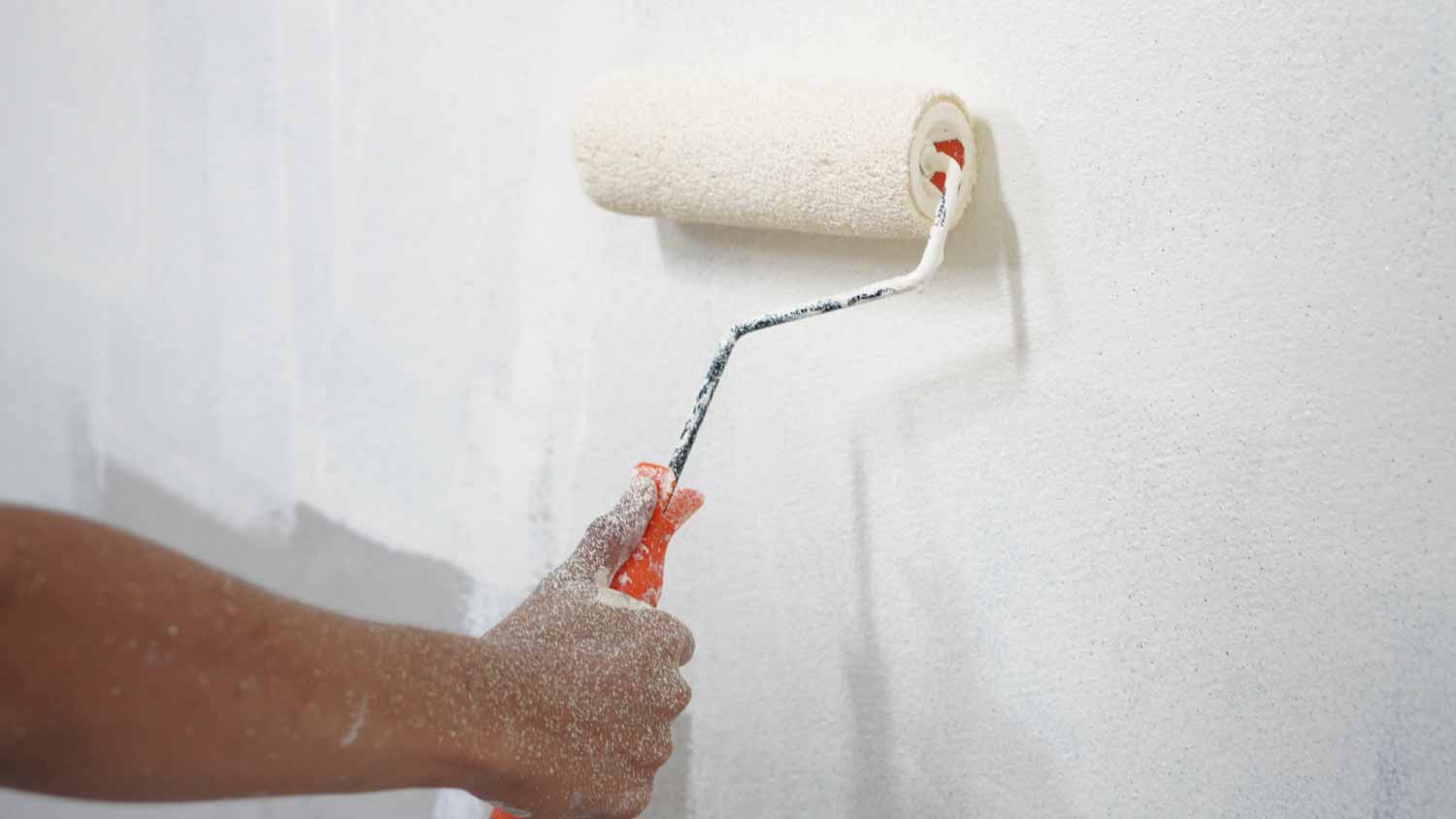
The cost to paint the interior of a house in St. Louis, MO depends on size, layout, type of surface, and more. Learn what factors can influence your total in this guide.
Tackle your painting projects with this guide to primer versus paint


Primer prepares a surface to allow smooth paint application and full coverage.
Paint adds color to a surface, giving your project an aesthetic finish.
Paint can be any color you like with a variety of sheens, while primer is white with a matte finish.
Primer is less expensive at $10 to $20 per gallon, and paint can cost as much as $80 per can, depending on the quality.
When it’s time to repaint your shabby hallway or bedroom, you need the right materials. So, what’s the deal with paint versus primer? The difference is primarily in how you use them. Primer prepares your surface for paint, and paint leaves you with a quality finish. The applications are similar but not quite the same, and these products have different compositions. Here’s what you need to know about paint and primer.
In a nutshell, primer prepares the surface, and paint finishes it. Primer contains resins that help it stick and seal, while paint contains pigment to add color. Sometimes, you can also use a paint and primer combination that will adhere to your surface without needing an extra coat.
| Quality | Paint | Primer |
|---|---|---|
| Intended use | Finish | Prep |
| Ingredients | Pigment | Resin |
| Purpose | Aesthetic | Seal and adhere |
| Location | Interior/exterior | Interior/exterior |
| Appearance | Various sheens | Rough/matte |

Primer adheres, and paint appeals to the eye. That’s ultimately what the two products boil down to. Primer can also help to cover stains and aid in transitioning between light and dark colors. The matte finish of primer helps paint bond to the wall or any surface you apply it to.
Paint is better at sealing your surface from the elements—especially when used on your home’s exterior. Primer has a sealant effect as well, and prevents moisture from seeping between layers. It can also block stains and minimize imperfections on the surface.
Primer and paint can both contain resins to help them adhere to the surface, but primer contains mainly resins. In contrast, paint is a solution of pigments that contains a binder to keep the solution stable so that the color goes on evenly. Paint and primer also contain a solvent that keeps them in liquid form before applying them. The solvent is water for water-based paint and primer, and for oil-based paint and primer, the solvent is usually turpentine. Oil paint is much harder to work with, so we suggest hiring a local interior painting pro for the job.
All-in-one paint contains pigment, resins, and solvents and is designed to coat a surface directly without needing a coat of primer first. In some cases, this is a good solution, but here are circumstances when you should use a separate primer and paint coat.
Hiding stains: Primer blocks stains from dissolving into the new paint and it’ll provide more even coverage.
Applying light color over dark: Deep burgundy walls will struggle to switch to sunny yellow without an extra layer or two of primer between them.
Changing between paint types: If you have oil-based paint on your wall but intend to apply a new water-based color (or vice versa), use a coat of primer formulated for the new paint type to avoid peeling.
While a gallon of paint costs $20 to $70, primer usually costs between $10 and $20 per gallon. If you have a larger surface that needs significant prep, using a primer coat can save you some money on materials. In addition, using primer can reduce the number of coats of paint you’ll need to ultimately achieve an even finish, saving time as well as money on your project.
From average costs to expert advice, get all the answers you need to get your job done.

The cost to paint the interior of a house in St. Louis, MO depends on size, layout, type of surface, and more. Learn what factors can influence your total in this guide.

The cost to paint the interior of a house in Columbus, OH depends on size, layout, type of surface, and more. Learn what factors can influence your total in this guide.

The cost to paint the interior of a house in New York, NY depends on size, layout, type of surface, and more. Learn what factors can influence your total in this guide.

Knowing how to paint stair railings is a useful trick in your DIY bag. Here are the simple steps necessary to achieve a professional-looking job.

Seeking the perfect color scheme for your mid-century modern house? We’ve got you. These are the most popular mid-century modern paint colors.

From stone, tile, wallpaper, or paint, discover different accent wall ideas for your space.